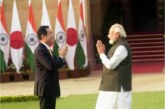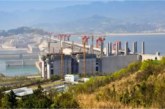The UPA has been voted back to power and in the realm of India’s relations with other countries; the new government has no broad options but to continue its old policies unless ground realities force it to change its chosen course. There is likelihood of keeping up the momentum generated by the UPA in its relations with major powers, including the United States. In South Asia, the developments like Taliban activities in Pakistan and latter’s capability to handle it and post-LTTE scenario in Sri Lanka are likely to determine India’s policy towards these countries.
Relations with United States
New Delhi’s relations with Washington will be further strengthened and strategic ties will get consolidated. The spectacular performance of the Congress, a major constituent of the UPA and weakening of the Left Front has been taken note of by the US. While hailing India’s flourishing plural democracy as ‘an example for us all’, President Barack Obama has pledged to ‘enhance the warm partnership between our two countries.’
Prime Minister Dr Manmohan Singh is likely to accord primacy in foreign policy on India’s partnership with the US. The emphasis will be on harmonizing India’s regional policies with the US approach in areas such as the Indian Ocean and South Asia, Middle East and the Far East; on boosting military-to-military cooperation, and, in overall terms, on striving to become a participant in the US’s global agenda and strategies.
However, the fact remains that the new Indian government also faces a changed – even evolving – international system. Apparently, India is yet to digest fully the Obama phenomenon. Indeed, the US’s own global priorities are shifting. Besides, China factor in Indo-US relations cannot be easily ignored.
China Factor
China is a decisive factor in India’s foreign policy. China opposed an Asian Development Bank loan to India on the grounds that the project was located in Arunachal Pradesh — ‘a disputed area’ according to the Chinese. There was also an attempt by China to work out with the United States the division of the Asia Pacific region with China getting a free hand in the Indian Ocean.
Sri Lanka launched its final offensive against the Liberation Tigers of Tamil Eelam, using air force, heavy artillery and tanks. Tens of thousands of Tamils (with ethnic and family ties with Indian Tamils) perished. Indian advice to restrain the use of heavy weapons fell on deaf ears. Sri Lanka continues to pursue a military solution to the ‘problem’ of the Tamil minority.
Nepal’s Prachanda cocks a snook at India and visits China on his first-ever official journey. The Maoists throw out the traditional Indian priests from the Pashupatinath temple and in a move to consolidate power dismisses the army chief. When thwarted in the attempt, he blames India for the crisis.
After much delay the Pakistani army launches a brutal offensive against Taliban– its erstwhile ‘strategic asset’ (Pakistan army chief General Ashfaq Kiyani was caught on tape saying this). It is only a matter of time before the Taliban/Inter Services Intelligence/Pakistan army create a 26/11-like incident in India so that they can cite the Indian threat and abort anti-Taliban operations.
One common factor in all these events is that the heat began to be turned on precisely at the time when Indian decision making went into a limbo. It was widely expected that there would be a hung Parliament and a weak government. Thanks to the Indian voters’s legendary sagacity, that has not happened.
In international relations there are very few accidents and the bunching of these anti-India actions in our neighbourhood could not be just coincidence, but show a design and pattern.
The US today has a much greater need of strategic engagement with China and arguably to “upgrade” the partnership in the direction of an elevated dialogue on global political issues. China’s global influence has increased and a full-blown US-China strategic partnership is prone to figure on the radars of countries such as India as a high probability if not an inevitability. The Obama administration will have to work hard to reassure India that it is not being relegated to a subordinate status.
An intriguing template of the new government’s foreign policy will be as regards India’s troubled relationship with Pakistan. Prima facie, an excellent opportunity is at hand to reach an understanding over the Kashmir problem. At the same time, the fallout of the US’s Afghanistan-Pakistan strategy needs to be carefully factored.
The US’s need to accommodate numerous factors – the Pakistan military, Pakistani pressure on the US to maintain balanced relationships with the two South Asian rivals and to mediate in India-Pakistan differences, any further radicalization of Pakistan’s internal situation, the trajectory of the war in Afghanistan, political accommodation of the Taliban, Pakistani sensitivities about Delhi’s influence in Kabul – all these impact on India’s core concerns and vital interests.
Most experts agreed that one of India’s largest challenges would come not from its west but east: China. According to Amitabh Mattoo of the Jawaharlal Nehru University, “China is recalcitrant. Forget magnanimity, things are becoming frozen. China is signalling its unwillingness to accommodate India, that is more worrying.”
According to another expert, India would have to take steps to increase its bargaining power. “China’s approach is to speak softly but carry a big stick. India’s approach is to speak loudly and carry a small stick…. We haven’t even cultivated Taiwan or backed the Dalai Lama. As a country, we are apprehensive and insecure about China.”
Nitin Pai, editor of Pragati—The Indian National Interest Review magazine, agreed, saying India has done the worst in five years with regard to China. “India needs to (sit) bilaterally with key players like Indonesia, Singapore, Japan, Korea, Vietnam.”
While the UPA government did generally well with respect to relations with the United States and was so-so with respect to Pakistan, it lost the plot with respect to China. Whether this was due to the presence of the Leftists or a strategic naivete-cum-pusillanimity within the Congress Party’s own senior leadership, the objective fact is that India failed to even mitigate the rise of Chinese power in East Asia.
Such was the neglect that even the band-aid, in the form of approval for infrastructure development along the India-China border, was applied after the elections started. The single biggest task—in the medium term—is to draw out a vision of India’s geopolitical role in the 21st century, and begin to take purposeful steps to get there.
The UPA government and the Obama administration will have to work with each other at least for the next four years. Here, far from a sense of defensiveness over Washington’s vaunted/troubled Af-Pak strategy, the UPA government must understand that President Obama’s success or failure in Afghanistan and Pakistan is to a significant extent contingent on New Delhi’s support. This doesn’t mean grandstanding: quite the opposite, it means a confident and constructive partnership. It means allowing and ensuring that the United States ends up doing the necessary—confronting the Pakistani military-jihadi complex—sooner rather than later.
The UPA is likely to continue to work towards forging close relations with its neighbours in particular so that it can devote its resources towards development and avoid unnecessary energy. Pakistan is affected by the Taliban activities and unless US forces Pakistan to face the Taliban, Pakistan alone cannot complete the mission.
At the same time, US is serious to wriggle out of the Iraq caldron with a specific period and maintain moderate peace in Afghanistan. However, India’s options are limited in this direction unless it joins hands with Pakistan and the United States to help resolve the Taliban question.
Dr. Arvind Kumar


